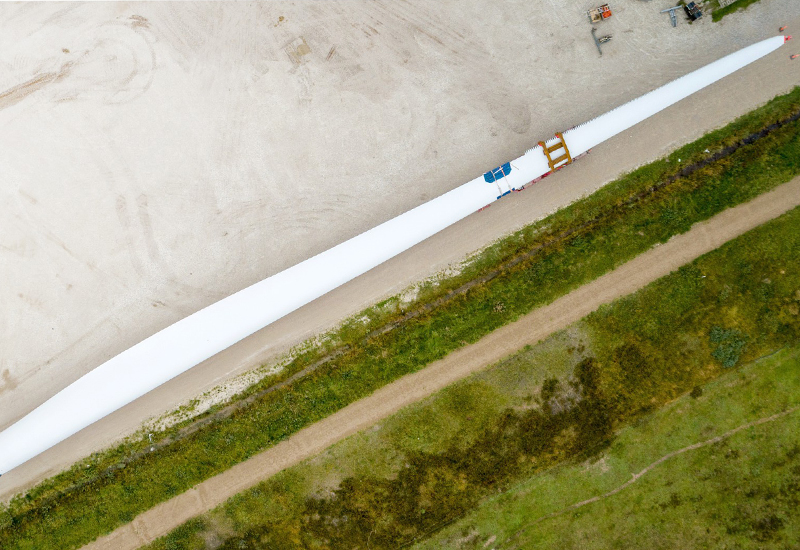Denmark – Vestas is introducing a novel technology that makes epoxy-based turbine blades circular without affecting the design or composition of the blade material.
The solution can be applied to currently in use blades by combining recently found chemical technology developed under the CETEC program and collaborations with Olin and Stena Recycling. When fully developed, this will do away with the need to rebuild blades or dispose of epoxy-based blades in landfills after they are no longer in use.
Due to the chemical characteristics of epoxy resin, a tough material that was thought to be hard to break down into reusable components, turbine blades have historically been difficult to recycle. Due to this, numerous technology innovators have tried to replace or modify epoxy resin with more easily treatable substitutes. The solution offered by Vestas is made possible by a cutting-edge chemical procedure that can transform epoxy resin into materials of virgin quality. The CETEC project, a partnership of business and academia created to research circular technology for turbine blades, involved Aarhus University, Danish Technological Institute, and Olin as partners. Together, they worked on the chemical process.
Commercial solution
Vestas will now concentrate on scaling up the revolutionary chemical disassembly process into a commercial solution through a newly formed value chain, sponsored by global epoxy maker Olin and Nordic recycling leader Stena Recycling. When fully developed, the approach will mark the start of a circular economy for all present and future epoxy-based turbine blades.
It has been routine procedure in the wind business for many years to produce wind turbine blades made of epoxy-based resin. The earliest wind turbines are nearing the end of their operating lives in the most developed wind energy markets, and this will continue to happen over the next few years. By 2025, WindEurope estimates that 25,000 tonnes of blades per year will have reached the end of their useful lives.
Future applications
When fully developed, the new approach will provide Vestas the ability to create brand-new turbine blades from recycled blade material. Future applications of the novel approach might make all epoxy-based composite materials a source of raw materials for a more comprehensive circular economy, which might include sectors other than wind energy.





